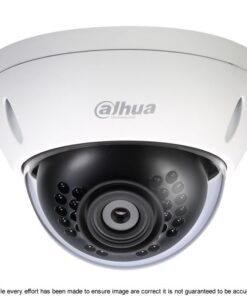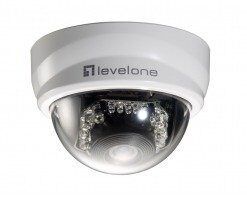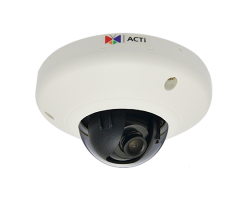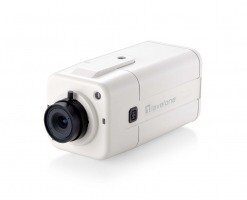- 1/2.7″ Progressive CMOS 2-Megapixel, 1920×1080
- Supports H.264/MJPEG and dual streams
- H.264 Main Profile
- Frame rates: up to 1920×1080 @ 15/12.5 fps
- Wide Dynamic Range (WDR)
- 3D Noise Reduction (3DNR)
- Vertical viewing angle: 49 degrees, Horizontal viewing angle: 78 degrees
- Supports Portrait Mode
- Minimum Illumination: 0 Lux/F1.5(IR On)
- Removable IR-cut filter for day/night viewing
- Built-in Infrared LEDs for night viewing up to 30m
- Micro SD/SDHC card slot for local storage
- Cable Management bracket for installation protection
- Analog video backup via BNC connector
- Triple power support: 12V DC/24V AC/PoE(802.3af)
- Free 64-CH Monitoring Software (Supports iCamSecure Apple App and iOS Safari)
H.264 Main Profile VS H.264 High Profile
Main Profile (MP) – This profile is used for standard-definition digital TV broadcasts that use the MPEG-4 format as defined in the DVB standard.[22] It is not, however, used for high-definition television broadcasts, as the importance of this profile faded when the High Profile was developed in 2004 for that application.
High Profile (HiP) – The primary profile for broadcast and disc storage applications, particularly for high-definition television applications (for example, this is the profile adopted by the Blu-ray Disc storage format and the DVB HDTV broadcast service).
Wide Dynamic Range
The Wide Dynamic Range (WDR) function of a camera is intended to provide clear images even under back light circumstances where intensity of illumination can vary excessively, namely when there are both very bright and very dark areas simultaneously in the field of view of the camera. WDR enables the capture and display of both bright and dark areas in the same frame, in a way that there are details in both areas, i.e. bright areas are not saturated, and dark areas are not too dark.
Noise Reduction
3D noise reduction makes for a very clear image without any traces of image ‘noise’.
Portrait mode
There are two distinct advantages to using the Corridor Format. Using a traditionally mounted camera means large portions of the video will be focused on the blank walls in a staircase or hallway. This means the camera cannot focus on the area that should be monitored in high-definition (a doorway) and ignore wasted space (a wall). Additionally, this wasted wall space also wastes bandwidth and video storage. Large images comprised of mostly blank space are created instead of the highly focused vertical images recorded with the Corridor Format.
Traditional HD video is recorded in a horizontal, or “landscape” format that is wider than it is tall with a ratio of 16:9. The new Corridor Format creates a vertical “portrait” video with a new 9:16 aspect ratio that works in tall, narrow spaces.










